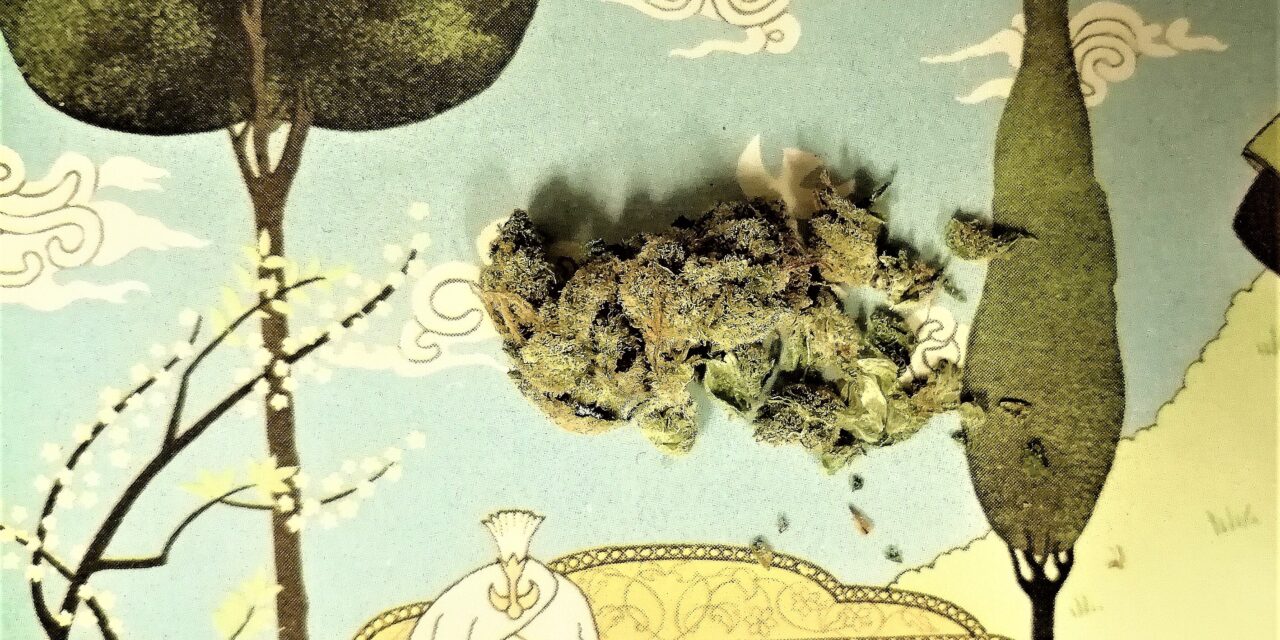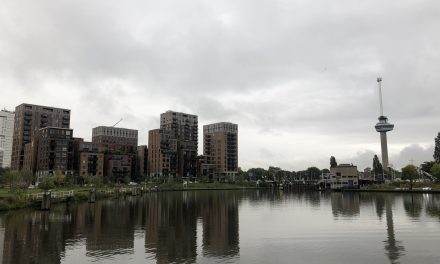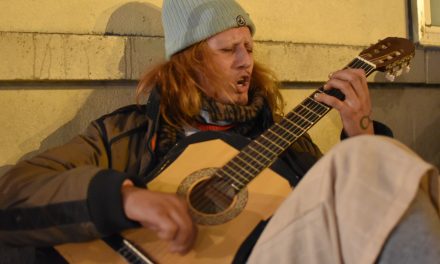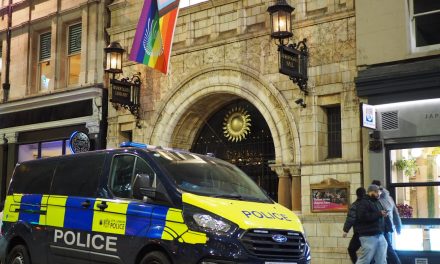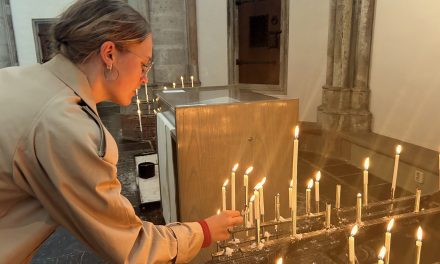The Mayor of Amsterdam, Femke Halsema, wants to forbid coffeeshops for tourists in the future. Femke Halsema, the police top, and the prosecution presented their plan on January 8th, 2021. How will they regulate this proposal and how did cannabis become such a signature for Amsterdam?
History of Cannabis in Amsterdam
The cannabis culture in Amsterdam started in the 1960s with a hippy culture around the world. This ‘hippy culture’ led to a rise in drug use. People gathered at meeting points to buy their marijuana and hash illegally which led to a problem of drug trafficking. Not only soft drugs were sold in the street but hard drugs as well. At first, the Dutch government tried to repress this wave, but in 1976 they amended the Opium Act that allowed the use of soft drugs. This was the start of a national tolerance for soft drug use in the Netherlands. This national tolerance was the start of ‘cannabis tourism’ in the Netherlands. Amsterdam is still famous for its coffeeshops, and especially Amsterdam. When you type in the search engine Coffeeshops tourist attraction, Amsterdam is the first city to pop up. Headings as: “15 Most Famous and Best Amsterdam Coffee Shops 2020”, “What about the Coffeeshops in Amsterdam”, “how to Visit Amsterdam Coffeeshops: Rules and Etiquette”, and so on appear. Some people think Mellow Yellow, a coffeeshop in Amsterdam founded in 1972 is the first coffeeshop in the Netherlands. Nevertheless, the history of coffeeshops in the Netherlands starts in Utrecht, with the coffeeshop Sarasani, founded in 1968. At the beginning of the 90’s there existed almost 1500 legal coffeeshops in the Netherlands, but afterward, there follow more restrictions regarding coffeeshops. The new regulations resulted in a strong decrease of the number of coffeeshops. In the past 20 years, the number of coffeeshops in Amsterdam went from 283 to 166 coffeeshops left in Amsterdam, which covers 30% of all coffeeshops in the Netherlands.
The problem of drug tourism
Despite the decrease in the number of coffeeshops, the demand for soft drugs has been growing in Amsterdam. Femke Halsema, the mayor of Amsterdam, states this is mainly caused by soft drugs tourism. This statement is in line by research of the OIS, (Onderzoek, Informatie en Statistiek), a research institution from the Netherlands, which shows that the biggest number of clients of coffeeshops in the city center are tourists. The city council of Amsterdam has been making a growth forecast of the population of Amsterdam and tourism. The expectation is that if there will not be any change in the coffeeshop policy, in 2050 there need to be added even more coffeeshops, to meet de demands for marijuana and other soft drugs. Femke Halsema stated to the Dutch media that Amsterdam should keep its tolerant, and hospital image, but that there should come an end to soft drugs tourism. Not only because of the nuisance it brings such as asocial behavior by soft drug tourists but also with the illegal hard drug trade it goes with. The head of the police department of Amsterdam commented that the hard drugs trade is a worrying and violent drug trade that grows with the demand for soft drugs.
Heleen Jansen, Corporate Communications Coordinator of the organization amsterdam&partners speaks tells us more about the problems soft drug tourism causes. Amsterdam&partners is a non-profit organization in the public sector. Their goal is to make Amsterdam a bit better every day, by increasing the quality of life, work, and visits.
Heleen Jansen: “At the end of November 2020, we wrote a report on the visitor economy of Amsterdam which exists of seven different points. One of them is the approach to the city center. Especially the Red-Light district and the coffeeshops attract a certain type of tourism. We spoke with the partners of amsterdam&partners which consists of hotels, cultural institutions as museums, the Heineken Experience, and restaurants, guide organizations, and tour boats. All of them have been complaining about the type of tourists visiting Amsterdam purely for its coffeeshops and, or the Red-Light District, because of asocial behavior they show.” The city council showed in a letter that in 2011 there were approximately 8 million overnight stays booked by 5.3 million tourists. And eight years later in 2019, this raised to 15.5 million overnight stays and 15.5 million tourists. The expectation is that in the next coming years there will be even millions of tourists extra received. The city council mentions that this amount of tourists cause problems especially in the city center with extreme bustle, public nuisance, and pressure on the quality of living and housing.

Left: Mellow Yellow Amsterdam, Flickr, Right: Front door former Coffeeshop Sarasani, Utrecht. Wikipedia Commons
Policy and regulation
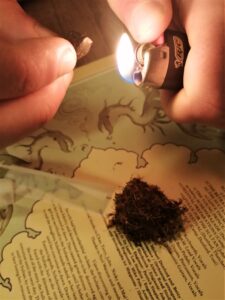
The Mayor of Amsterdam, Femke Halsema, the head of the police department in Amsterdam, and members of the Amsterdam city council requested a notion to discuss the regulation of coffeeshops to make the cannabis trade more transparent and maintainable. They talk about transparency from both the side of the consumer (in front of the curtains) and by making a clearer distinction between soft drugs and the hard drugs trade (behind the curtains).
The ‘Driehoek’, a consultative body of police representatives, the local government and the prosecutors of Amsterdam, constructed a letter in which they made a plan to make the cannabis trade more transparent and maintainable. One of the steps is to regulate the so-called ‘I-criterium’ which is already in effect in other cities of the Netherlands since 2011. The I-criterium allows coffeeshops to ask for a ‘weed pass’. This pass needs to be shown in coffeeshops to prove if you are a citizen from the Netherlands. The weed pass came into effect after the mayor of Maastricht spoke its concern of nuisance by drug tourism from Belgium and illegal drug dealers following tourists into the town to try to sell them cannabis, or other drugs.
In Amsterdam there has been a trial of the ‘weed pass’ but this did not work. Mainly because of the many tourists coming for the coffeeshops in Amsterdam and concerns that the trade in soft drugs would move to illegal trade on the street. So why would it work now?
With the proposal, the consultative body of Amsterdam does keep in mind that with the introduction of the I-criterium in Amsterdam there could be a shift from the soft drug trade to the illegal trade on the street. But keeping their goal in mind they still see this as an appropriate solution. Namely, to change the reputation of Amsterdam as a cannabis attraction, and to have a more similar cannabis regulation as other cities of the Netherlands.
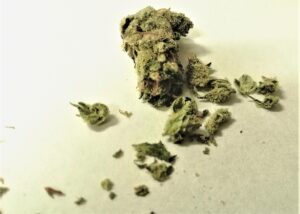
What is the impact on instutions who depend on tourism?
The biggest question asked in the media is if tourists will still come with this new regulation. Heleen Jansen states that after talking with the partners of amsterdam&partners no one is concerned about tourists not showing up anymore purely because of the coffeeshops. We also speak with Laurent Soula, 28 years old French man, and future visitor of Amsterdam, who sometimes uses marijuana and has never been to Amsterdam. What do you think about coffeeshops closing for tourists? And would you still want to visit Amsterdam? Laurent: “I think the idea of allowing soft drugs and having coffeeshops is not bad, it provides space to those who want to use marijuana. The only real problem is the amount of space dedicated to this use. In this instance, I understand if they want to close coffeeshops in Amsterdam for tourists if it brings that much nuisance. That I will not be able to go to the coffeeshop as a tourist in Amsterdam is anecdotal to me. I would still like to visit Amsterdam for its museums, the culture and the experience.”
Nevertheless, research of the OIS (Onderzoek, Informatie en Statistiek), a research institution from the Netherlands, shows that 57% of the tourists in the city center value a visit to the coffeeshop as ‘extremely important’. Elisabeth Jepma, responsible for the direct communication of the management information of the city council of Amsterdam states that the proposal will soon be on the agenda for another discussion on the topic, which will bring more clarity about the plans.
